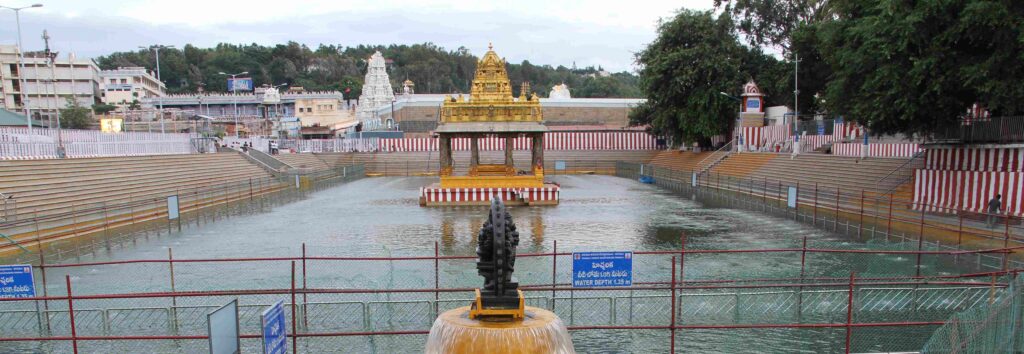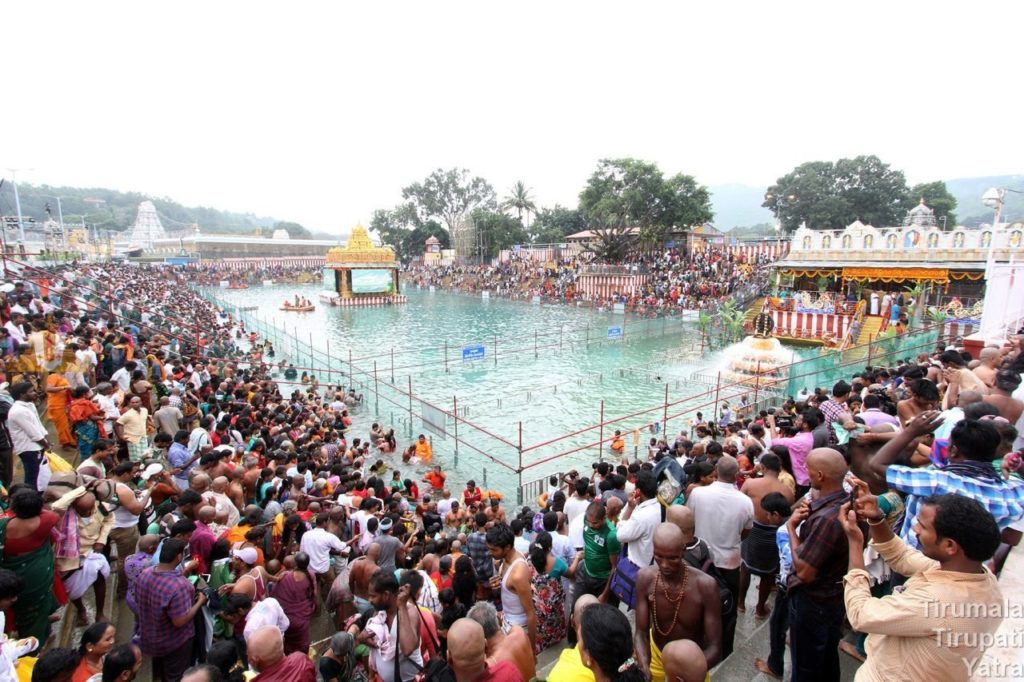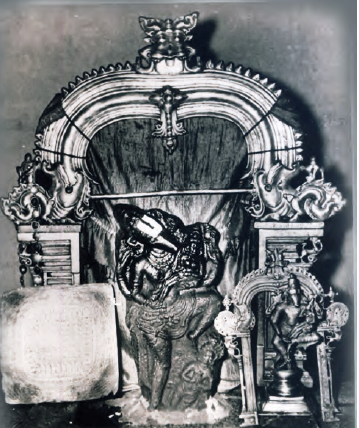The article “Swami Pushkarini – The Path for Salvation” published in Sapthagiri Magazine by “Sri M.R.K. Sateesh Babu”
Swami Pushkarini
Swami Pushkarini is a sacred lake located on Venkatachala Mountain adjacent to Ananda Nilayam where the deity resided after he arrived from heaven on his divine vehicle. Of the seven lakes in Trilokas,
Swami Pushkarini is the most significant and prominent lake that lies on the northeast side of Sri Venkateswara Swami temple. It is one of the iconic places on earth that has the divine and angelic power to bless the devotees with materialistic and worldly comforts.
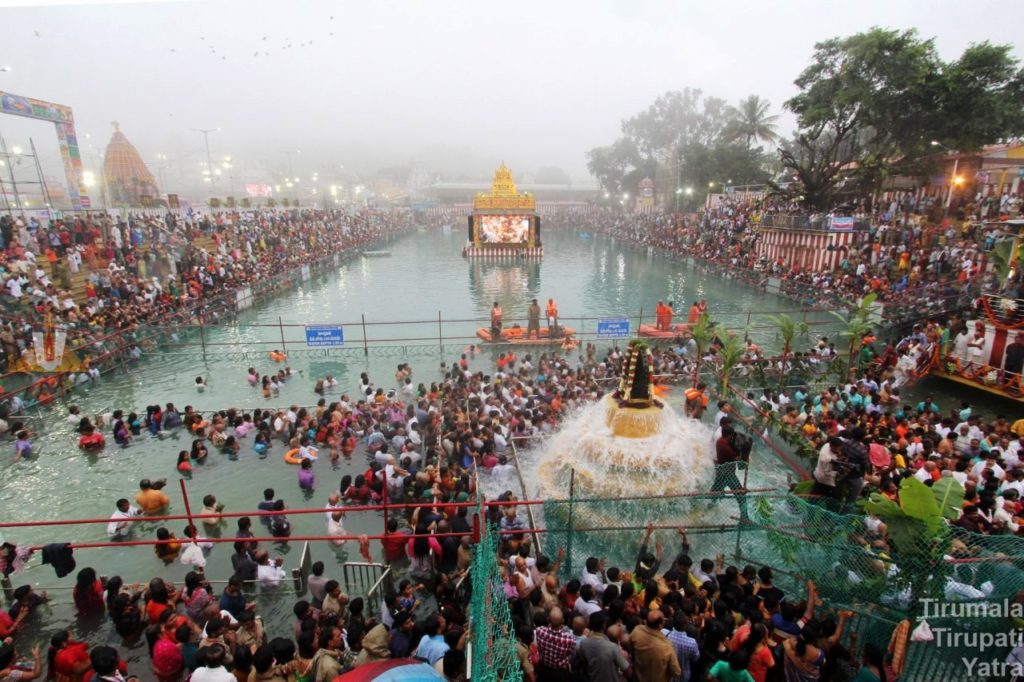
In many of the Puranas and mythological books, the glory and significance of Pushkarini are cited clearly.
Vamana Purana
In the ancient age, there was a sage called Markandeya. He performed penance to propitiate Brahma to get blessed with a boon from him. Convinced with his austerity, Brahma appeared before Markandeya to bless his deep-delved desire.
Sage Markandeya requested Brahma to give him the energy to visit all heavenly lakes in Trilokas to offer prayers and to do service with devotion. Brahma answered Markandeya that it was impossible to visit all seven lakes, but suggested Markandeya visit ‘Swami Pushkarini’ where he could gain the fruit of his burning desire with a single dip in the lake’s water on Dwadasi Day in Dhanurmasa at dawn when all heavenly lakes enter the Pushkarini (12th day, the day that comes before full moon day in December.
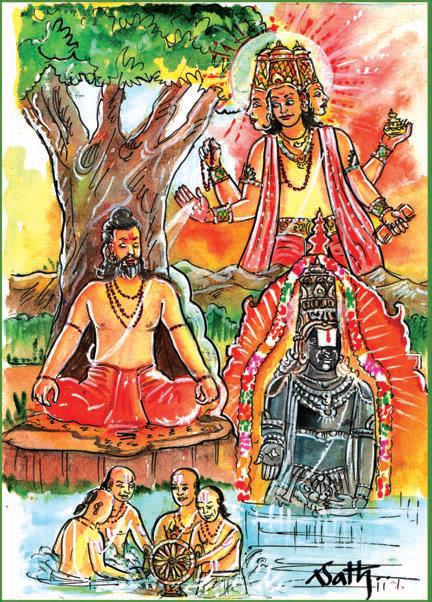
As suggested, Markandeya visited Swami Pushkarini, performed his services, and offered prayers with devotion. The inborn desire of the sage was fulfilled.
Varaha Purana
Once upon a time, there was a king called ‘Sanka’. He was a great devotee and also a great warrior. He used to rule the kingdom on the four wheels of Dharma. Unfortunately, the kings of his neighboring kingdoms felt jealous of his prosperity, and allied to defeat the king by hook or by crook. The news was like a bolt in the blue to ‘Sanka’.
Despite his undaunted endeavor, the king was unable to protect his kingdom. It had become a herculean task to protect himself from them. They seized his kingdom and made ‘Sanka’ to run for his life. Escaping from his enemies, Sanka reached his teacher. Pitied with his condition, the teacher suggested ‘Sanka’ to visit Swami Pushkarini to offer prayers after having a bath in it.
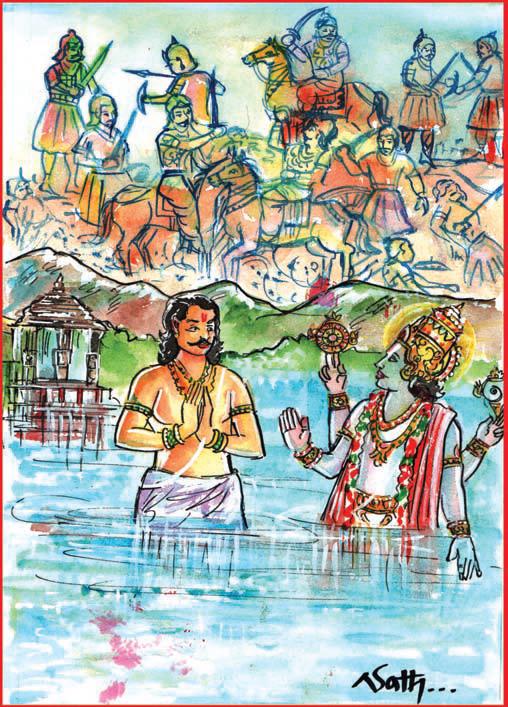
Understanding the greatness of Pushkarini, Sanka took a bath in Pushkarini and offered prayers to God with dedication. While he was still in the lake offering prayers, God appeared before Sanka and blessed him with his lost prosperity. The coalition that was formed by his enemies failed and they returned to his kingdom. ‘Sanka’ had become a sovereign king with the blessing he received from God on his visit to Swami Pushkarini.
Swami Pushkarini is at the forefront of all sacred lakes. It has the power to fulfill the inborn desires and also to bless the Devotees with all prosperity.
Skanda Purana
Once there was a king named Nandu in Chandravamsa. He had a son called Dharmagupta. He was brought up by the king with utmost care. After he had attained the age to rule the kingdom, the king assigned the responsibilities of his kingdom to his young son and left for the forest. He ruled the kingdom with ease. One day, Dharma Gupta went to a forest. Even before he had returned from the forest, it became night.
Suddenly, a lion chased him. To escape from a lion, the king climbed a tree where he found a bear. It was there on the tree, protecting itself from the lion. On seeing the bear, the king was shocked with fear. The bear observed the king’s anxiety and communicated with the king in human language. It told the king not to get afraid of it and also suggested the king take a rest for a few hours as he was very exhausted.
Convinced by the bear’s conversation, the king had slept without hesitation. While the king was sleeping, the lion tried to convince the bear with pleasing words and asked the bear to push the king from the top of the tree. Though the bear was an animal, it tried to keep its promise. It refused to betray the king. It said that if he does so, there will not be redemption from sin. It suggested the lion leave its greediness.
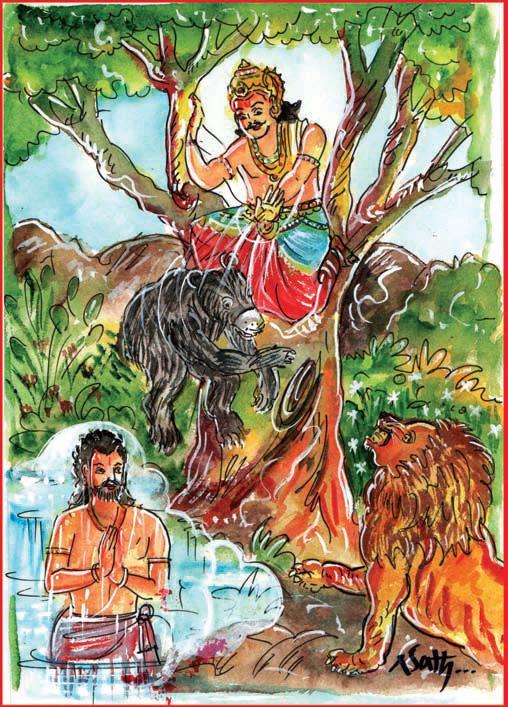
After the king had woken up from sleep, the bear took a rest. The lion played the same trick that it had done before. The king, who was convinced by the lion’s words, left his promise and pushed the bear from the top of the tree. The bear opened its eyes and balanced itself without falling. It cursed the king for his ingratitude to become a lunatic. From then onwards, the king had become a mad person wandering all the places.
Some of his followers recognized him and took him to his father who was in the forest performing austerity. The old king felt sad. On the suggestion of the Sage Gemini, he took his lunatic son to Swami Pushkarini. He dipped in Pushkarini along with his son.
The very next minute, Dharmagupta, his son recovered from his curse and regained his previous intelligence. From this, it is evident that Swami Pushkarini has the power to redeem from the all-time sin.
Brahma Purana
Once Goddess Saraswathi, with a desire to gain more veneration and fame than any other river including Ganga, formed as a river. Sage Pulasthya visited the place where Goddess Saraswathi formed a river. He felt that the Goddess had not shown reverence to him. With anger, he cursed Goddess Saraswathi that her desire would not come true.
Goddess Saraswathi felt humiliated by this curse. She cursed Pulasthya that his sons would become monsters and fight against Mahavishnu. Realizing his mistake, the sage requested the Goddess to take back her curse. As it was not possible to do it, she blessed Pulasthya that his last son Vibhisana would become the devotee of Sri Mahavishnu and bring a good name to his family.
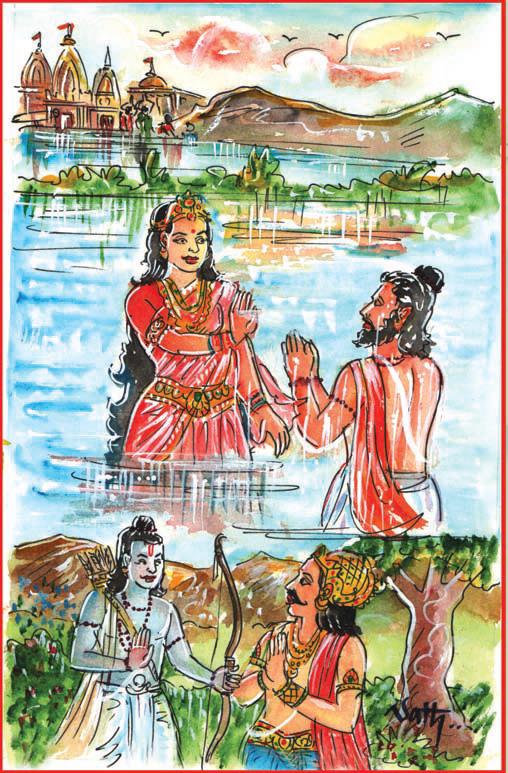
After this incident, Goddess Saraswathi, who desired to flow as the sacred river, did penance to fulfill her desire. Sri Mahavishnu appeared and said that he could not erase the curse but he could bless her to be the lake that is as mighty as the Ganges to erase the sins of the devotees who will take a dip in her water. From then onwards, Goddess Saraswathi has become ‘Swami Pushkarini’ (the sacred lake).
Bhavishath Purana
It is said that Sri Rama visited Swami Pushkarini, while he was in search of Sita. Ravana abducted Sita. To trace out Sita, Rama crossed the mountains and reached the place where Hanuma resided. He met Hanuma and thereby helped Sugreeva in killing Vali.
While they were about to move in search of Sita, Anjana Devi, mother of Hanuma, requested Rama to visit her hermitage. Though Rama said that he would come later, Hanuma compelled Rama to come over there.
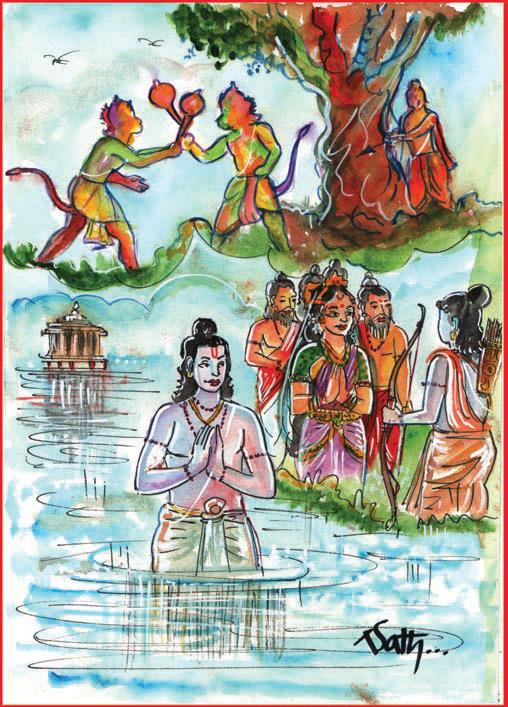
On his request, he visited her hermitage, blessed the sages, and visited Swami Pushkarini. He dipped in the water and offered obeisance. It is said in Purana that Rama could trace out Sita only after taking a bath in Swami Pushkarini.
Sri Swami Pushkarini Theertham
To take a bath in a sacred pond ‘Sri Swami Pushkarini’ –
To serve with devotion ‘a teacher,
To offer prayers to God on ‘Ekadasi’, ……….. is magnificent, marvelous, and memorable.
Likewise, To take birth as a human being,
To lead life successfully on earth and
To take a bath in ‘Swami Pushkarini’….
……….. is good, great, glorious.
Of all sacred lakes (theerthas) ‘Swami Pushkarini’ is the most pious and virtuous lake. It is situated in the sacred premises of ‘Tirumala Temple’, the abode of Kaliyuga – Lord Venkateswara. It is said in Puranas that this sacred lake was brought by Garuda, the vehicle of Sri Mahavishnu on onto the mountain at the command of Sri Mahavishnu.
So it is called ‘Swami Pushkarini’. It is also mentioned in the Puranas that a single dip in the sacred water of a lake would wash away the sins of an individual and bestow temporal prosperity.
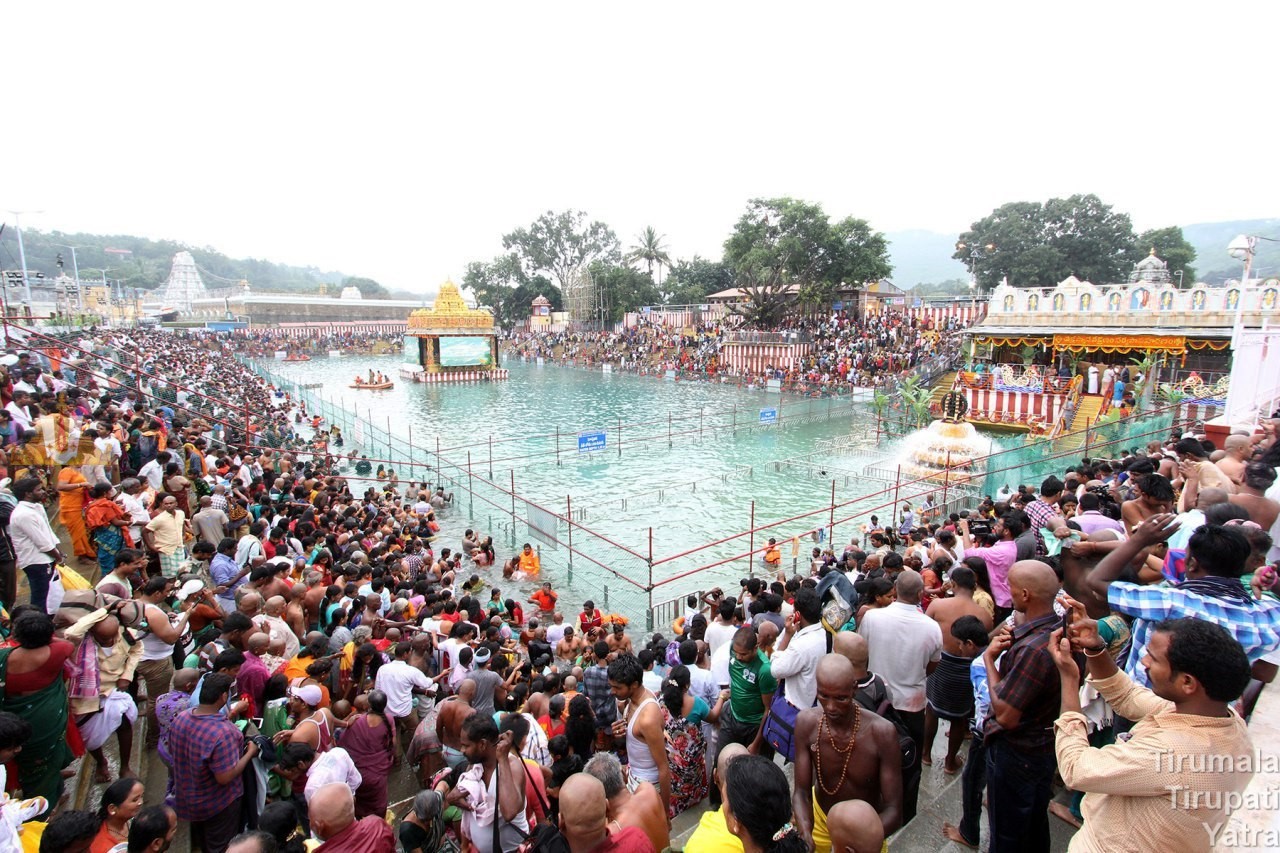
Every year, on Vaikunta Ekadasi of the bright fortnight in Dhanurmasa (November/ December) all the three & half crore holy Theerthas enter this Swami Pushkarini. In connection with this auspicious occasion, the event of Divine Chakra Snana Ceremony (sacred bath) is performed on the bank of Swami Pushkarini soon after the early morning rituals to Sri Venkateswara Swami in the Sanctum Sanctorum in Tirumala Temple.
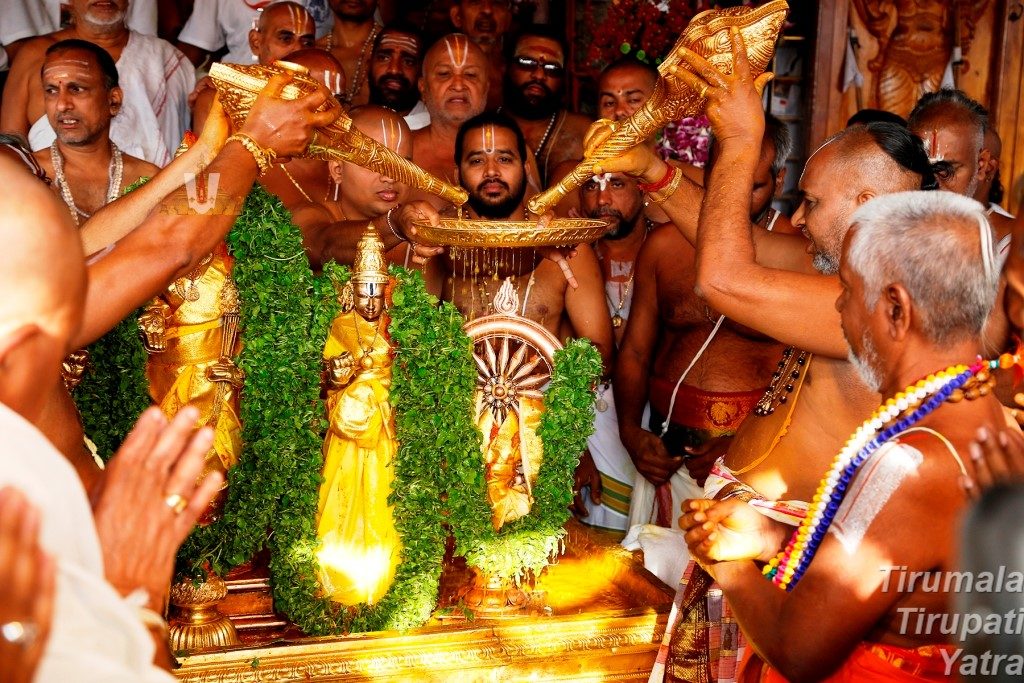
From Ananda Nilyam, after the morning rituals ‘Sudharshana Chakrathalwar’ was moved in the streets in procession and brought to the sacred lake for a bath. After the sacred bath in the holy lake, ‘Chakrathalwar’ is decorated with jewels and gems and taken back to its original place. All the Devotees avail this opportunity to participate in the Chakra Snana Ceremony and take a holy dip in Swami Pushkarini after the ceremony is performed.
